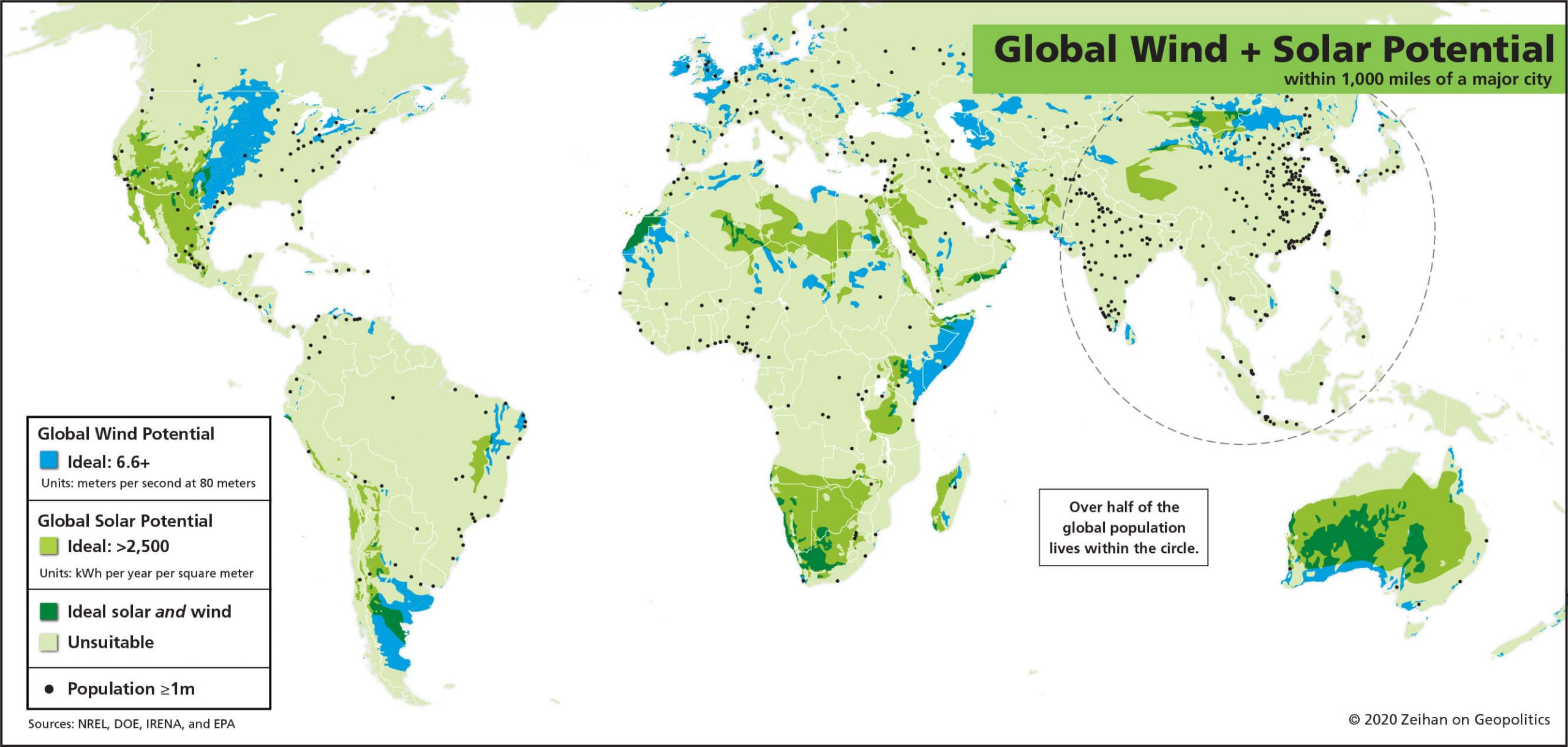Green energy has problems.
See this map?
If you live in the blue zone you live in a place where wind is a viable power source.
If you live in green you live in an area where solar makes sense.
Dark green solar and wind works, if you live in australia this is your chance to feel some pride your country is an ideal environemnt.
The problem for both sources of power is that its inconsistent, if battery technology wasn't so shit and that is what is holding back all of the cool shit then these two power sources would become more viable, but they would still not be a replacement. Solar helps, wind helps, but if you want to power modern civilization with minimal environmental impact.
You want nuclear, thankfully they are working on little mini nuclear power plants so instead of the big six year minimum model to build a nuclear powerplant we are reaching the ability to build small ones with ten years of juice for less cost, using less space and all of it costing less money.
There are workable solutions in sight we just have to be pragmatic about it.

